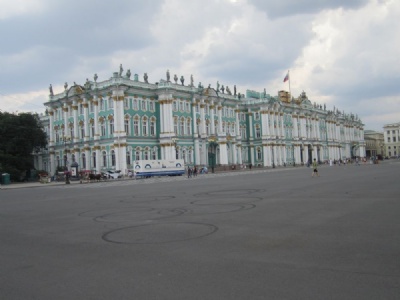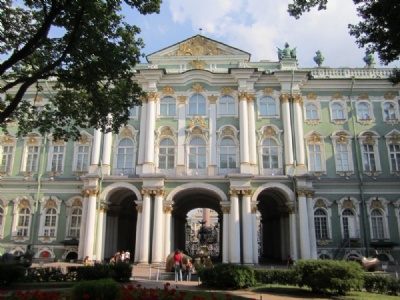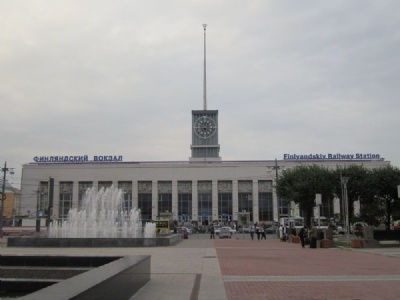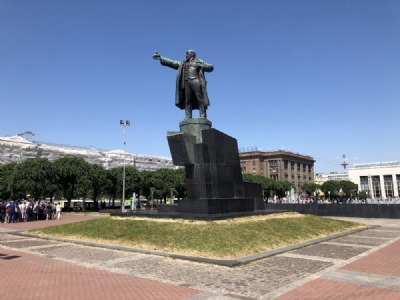Saint Petersburg
Saint Petersburg on the Baltic coast is perhaps best known as the residence of the Russian tsars. It was there they reigned and it was there they were buried. During the Second World War the city was called Leningrad and it was besieged by the Germans between 1941 and 1944. But Saint Petersburg is also a city that is equally strongly associated with the Russian revolution and the founding of the Soviet Union. It was here that Tsar Nikolai II was overthrown in February 1917, and it was here the Bolsheviks carried out a coup in october of that year, laying the foundations for the Soviet Union in 1922.
When the First World War broke out in 1914, Russia belonged to the Entente that fought against the central powers, includning Germany. Russia was rather quickly hit by military defeats, which led to dissatisfaction with the tsarist rule and Tsar Nikolai II. He was forced to abdicate in February 1917 and Russia’s rule was taken over by the nationalist provisional government under the leadership of Alexander Kerensky. This was a turbulent time and Lenin’s Bolsheviks prepared their own coup d’etat (revolution) against the Provisional government. Kerensky and the Provisional government moved into the Winter Palace, which became the seat of government. Previous rooms, belonging to the tsar, were converted into study and conferance rooms. During the tsarist period between 1732 and 1917, the Palace was the official residence of the tsar. On October 25, 1917, the Winter Palace was stormed by the Bolsheviks and overthrew the provisional government. Kerensky managed to escape a certain death and fled to Britain.
The storming of the Winter Palace began with the cruiser Aurora, which in 2011 is located in the Petrogradski district on the river Neva. Aurora was built in 1897 and launched in 1900 and is named after a Roman goddess. Aurora participated in the battle of Tsushima in the Russian-Japanese war between 1904–05. During the First World War she was again put into battle and it is during this war that she placed herself in the history books. In February 1917 when Tsar Nikolai II was overthrown by the Provisional government, the crew mutinied, the captain was killed and his deputy was severely injured. Part of the crew joined the coup-makers, others came to support Lenin and his Bolsheviks. In October of the same year a loose shot was fired from one of Aurora’s guns. This was the starting point for the Bolsheviks to storm the Winter Palace and overthrow the Provisional government which had its seat in the palace. During the Second World War she was moored in Leningrad/Saint Petersburg, her guns were dismantled and moved to land to be deployed in the fighting against the Germans. Aurora was badly damaged during the war but was repaired and in 1957 she became a museum and monument dedicated to the October revolution.
When the unrest began in February 1917, Lenin was in exile in Switzerland. In the turbulent times that followed the unrest, Lenin returned to Saint Petersburg on April 17, 1917. Lenin arrived at the Finland station as a hero and began to prepare his own coup d’etat. But there was no time to revolt, but Lenin was forced to hide in various places in and outside Saint Petersburg in order to eventually flee to Finland in August 1917. Lenin secretly returned to St. Petersburg in October 1917 but did not participate in the actual storming of the Winter Palace. During the siege of Leningrad, the station was the only one in use and became an important link in the supplies brought to Leningrad from the Soviet mainland.
Current status: Preserved with museum (2011).
Location: 59°56'25.14"N 30°18'49.87"E (Winter ,alace).
Get there: Metro to Admiralteyskaya.
Follow up in books: Beevor, Antony: Russia: Revolution and Civil War, 1917—1921 (2022).








The Winter Palace, or Hermitage, is perhaps Russia’s most famous museum and tourist destination and is recognized by its characteristic mint green facade. It contains some of Russia’s most valuable and significant cultural art treasures. The Winter palace received a strong symbolism under communism, albeit somewhat dimmed in comparison with places where Lenin lived.
Aurora became, and still is, a strong symbol of the October revolution and no revision of this took place after the fall of the Soviet Union in 1991. Aurora’s central location in Saint Petersburg makes her a popular tourist destination and over the years she has been renovated to be preserved as a floating museum.
The Finland station also became a strong symbol of Lenin and the revolution. His return from exile in Switzerland is seen in communist historical circles as a greater event than when he returned from Finland. The locomotive he was travelling with when he returned from Finland in August 1917 is on display at the station. In 1926, a large statue was erected in front of the station.
Saint Petersburg has also changed its name over the years. From its founding in 1703 until 1914, the city was called Saint Petersburg, but in connection with the outbreak of the First World War in 1914 when Russia ended up at war with Germany, the name was changed to the more Russian-emphasized Petrograd. After Lenin’s death in 1924, the city was renamed Leningrad to become Saint Petersburg after the fall of the Soviet Union in 1991. The city was also the capital until 1918, when Lenin moved it to Moscow for security reasons, further away from the center of events and not as exposed to a possible invasion from the west, but also by land via Finland, which was only a few miles away.